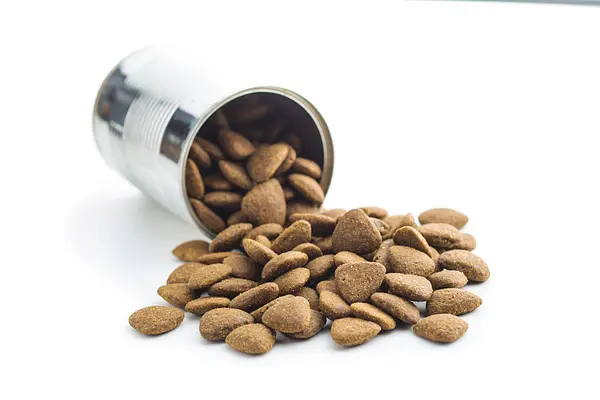新米の子犬の親として、最も重要な決断の一つは、成長中の愛らしい毛玉に適切な食事を選び、適切な分量を決めることです。ドライフードは多くの犬の飼い主に人気の選択肢ですが、どのくらい与えるべきかを理解するのは少し難しいパズルのようなものです。心配いりません!私たちがドライフードの謎を解くお手伝いをし、あなたの子犬が成長するために必要な栄養を確実に摂取できるようにします。
ドライフードの分量に影響する要因
子犬にどのくらいのドライフードを与えるかを決める際には、いくつかの要因が関わってきます:
- 年齢:子犬は発育の様々な段階で異なる栄養ニーズを持ちます。
- 犬種のサイズ:大型犬の子犬は小型犬の子犬とは異なる要求があります。
- 活動レベル:より活発な子犬は、冒険の燃料としてより多くのカロリーを必要とする場合があります。
- 体調:子犬の体重を監視し、それに応じて分量を調整してください。
給餌ガイドの参照
ほとんどの高品質な子犬用ドライフードブランドは、パッケージやウェブサイトに給餌ガイドを提供しています。これらのガイドは通常、子犬の年齢と予想される成犬時の体重に基づいて、推奨される1日の分量を提供します。これらのガイドラインから始めてください。ただし、これらは単なる出発点であることを覚えておいてください。
体調の監視
適切な量のドライフードを与えているかどうかを判断する最良の方法は、子犬の体調を監視することです。肋骨を簡単に感じることができるはずですが、見えるべきではありません。上から見たときに子犬には明確なウエストがあり、横から見たときにはお腹が引き締まっているべきです。子犬が少し太りすぎているか痩せすぎているように見える場合は、それに応じて分量を調整してください。
食事の分割
子犬は成犬よりも胃が小さいため、1日のドライフードの分量を複数の食事に分けるのが最適です。例えば、子犬が1日に1カップのドライフードを必要とする場合、1日3回、1/3カップずつ与えることができます。子犬が成長するにつれて、食事の回数を徐々に減らし、1回の分量を増やすことができます。
必要に応じた調整
子犬は異なる速度で成長し、栄養ニーズは時間とともに変化する可能性があります。子犬の体調とエネルギーレベルを注意深く観察し、必要に応じてドライフードの分量を調整することをためらわないでください。子犬の成長や栄養について何か心配がある場合は、個別のアドバイスについて獣医師に相談してください。
ボーナスのヒント:Doggy Timeアプリの使用
子犬のドライフードの分量と給餌スケジュールの追跡を簡単にするために、「Doggy Time」アプリの使用を検討してください。この便利なツールを使用すると、子犬の食事を記録し、成長を監視し、家族メンバーとケアについて協力することができます。スマートアラームとスケジュール機能により、子犬が食事を逃すことなく、栄養ニーズに沿って順調に進むことを確実にできます。
覚えておいてください。すべての子犬はユニークであり、一匹に効果的なことが別の犬には効果的でない場合があります。忍耐強く、観察力を持ち、常に子犬の健康と幸福を優先してください。バランスの取れた食事とたくさんの愛情があれば、あなたの毛玉は幸せで健康な成犬に成長するでしょう。






